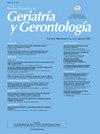西班牙老年人的早逝愿望:描述性研究
Q3 Medicine
引用次数: 0
摘要
目的探讨老年人急死意愿(WTHD)患病率及相关因素。方法采用横断面描述性研究方法,对27名老年人进行人口统计学、认知、功能、抑郁和病史等变量的记录。采用死亡欲望评定量表(DDRS)和一份与WTHD可能相关的问卷调查。结果59.3%的参与者表现为WTHD。在以前的研究中,没有发现与WTHD相关的变量或与安乐死的愿望有显著的关系。然而,生活意义指标、WTHD和抑郁之间存在关系。结论在研究样本中患病率显著(超过一半),与抑郁症状或自杀欲望无关。相反,他们在表达这种愿望的同时,还表达了对生活的某种满足或对生活的某种厌倦,这两种情况都涉及到自然和彻底结束的愿望。扩展没有临终病理的老年人对死亡愿望的不同含义,可以帮助区分他们的经历,并在临终关怀中改善最适当的干预和支持。本文章由计算机程序翻译,如有差异,请以英文原文为准。
Deseo anticipado de muerte en personas mayores residentes de población española: estudio descriptivo
Objective
To explore the prevalence of Wish to Hasten Death (WTHD) and associated variables in older adults in residential settings.
Methods
A cross-sectional descriptive study was conducted with 27 residents of a nursing home, recording demographic, cognitive, functional, depression and medical history variables. The Desire for Death Rating Scale (DDRS) and an ad hoc questionnaire on various aspects possibly related to WTHD were also administered.
Results
59.3% of the participants exhibited WTHD. No significant relationships were found with variables commonly associated with WTHD in previous research or with the desire for euthanasia. However, there was a relationship between indicators of meaning in life, WTHD, and depression.
Conclusions
The prevalence is significant in the studied sample (more than half) without being associated with depressive symptoms or suicidal desires. On the contrary, they express such a desire alongside a certain satisfaction with their life or life fatigue, which in both cases involves a wish for a natural and complete closure. Expanding the different meanings that older adults without terminal pathologies attribute to the wish to die could help differentiate their experience and improve the most appropriate intervention and support in end-of-life care.
求助全文
通过发布文献求助,成功后即可免费获取论文全文。
去求助
来源期刊

Revista Espanola de Geriatria y Gerontologia
Medicine-Medicine (miscellaneous)
CiteScore
1.90
自引率
0.00%
发文量
62
审稿时长
85 days
期刊介绍:
Una revista de gran prestigio por sus artículos originales de investigación y revisiones. Permite cubrir todas las áreas de la medicina pero siempre desde la atención al paciente anciano, y está presente en los más reconocidos índices internacionales.
 求助内容:
求助内容: 应助结果提醒方式:
应助结果提醒方式:


